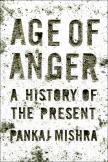A time of powerlessness and rage
In light of Brexit, ISIS, the election of Donald J. Trump and the rise of authoritarian populists in places as diverse as India, the Philippines, Russia and Turkey, the release of Pankaj Mishra’s new book is nothing if not timely. In Mishra’s words, this is the story of modernity’s malcontents told “from the perspective of those who came late, and felt, as many people do now, left, or pushed behind.” Beautifully written, Mishra’s text offers a gripping retelling of the “climate of ideas” that has given rise to our own “age of anger.”
Borrowing from Friedrich Nietzsche and Max Scheler, Mishra’s key descriptive term for the modern age is “Ressentiment.” Led by figures like Voltaire, the Enlightenment set out to establish an ideal of “cosmopolitan liberalism,” namely “the universal commercial society of self-interested rational individuals.” The problem, of course, is that not everyone drank the Kool-Aid. In Mishra’s narrative, Jean-Jacques Rousseau emerges as the intellectual godfather of Ressentiment. It was Rousseau—the “indignant outsider in Parisian salons”—who originated the most devastating critique of modernity, lambasting the currents of moral corruption, economic inequality and intolerant elitism that he traced to Voltaire’s ideal of “self-love.” Ressentiment only grew as industrial capitalism disrupted societies first in Europe and later around the world, vastly increasing socioeconomic inequality even as modern culture propagated the ideal of social equality. This has further exacerbated what Hannah Arendt has described as “negative solidarity,” namely a growing awareness of relative deprivation that has produced a toxic mix of envy, humiliation, powerlessness and rage. Ultimately, Ressentiment has been driven not by ideological difference but by competitive mimesis.
Ressentiment’s exaltation of “moral victimhood” in turn drove the various “isms” that arose in the 19th century.
Ressentiment’s exaltation of “moral victimhood” in turn drove the various “isms” that arose in the 19th century. Reacting as much to Napoleon as Voltaire, German Romantics opposed the liberal universalist conceit of the French Enlightenment, embracing alternative ideals of tradition, ritual and community. In the midst of profound modern changes in economy, politics and gender roles, the concept of the “volk” or “people” emerged at the heart of the new religion of nationalism. (It is telling that the Italian unification campaign of the 19th-century was known as the “Risorgimento,” literally “Resurrection”). Neglected figures loom large in Mishra’s retelling of modernity, such as Johann Gottlieb Fichte, the German theorist of enchanted and exclusionary nationalism, or Gabriele d’Annunzio, the post-World War I Fascist who looked to “rejuvenate Italian manhood through violence.” But if Ressentiment undergirded the mythic, masculine and destructive nationalisms of the 20th century, it also facilitated the rise of a less-remembered late 19th-century phenomenon: Mikhail Bakunin’s anarchist movement. This is one of the most intriguing arguments of the book. For Mishra, it is not 7th-century Islamic theology but the hyper-violent, transnational, individualistic and nihilistic Western anarchism of the late 1800s that resonates in the terrorist acts of Timothy McVeigh or Abu Bakr al-Baghdadi.
Mishra’s argument is convincing, but it also has lacunae. Ours is an age of anger, but it is also an age of compassion. Global technologies have produced resentful mimesis, but they have also produced new forms of solidarity unimaginable three centuries ago. And if I wholly agree with Mishra that a theological crisis undergirds much modern angst—namely that the perception of a “Godless universe” has profoundly affected our sense of hope and confidence in truth and communal values—I am not as convinced as Mishra that God really is dead. In turn, public theology may be one of the few places left for the type of “truly transformative thinking” that the author calls for but never offers at the end of his book. This may also be one of the reasons that Pope Francis—described by Mishra as the “most convincing and influential public intellectual today”—has been able to offer such a compelling vision even in our purportedly secular and bitter age.
Mishra’s argument is convincing, but it also has lacunae. Ours is an age of anger, but it is also an age of compassion.
Overall this book offers a remarkable recovery of the modern antecedents of our current politics of anger. Like Charles Taylor’s A Secular Age, Mishra’s Age of Anger also synthesizes a library’s worth of cultural and intellectual history in one book. Put this on your books to read for 2017, and let’s hope it doesn’t come to define our future.
This article also appeared in print, under the headline “A time of powerlessness and rage,” in the June 26, 2017, issue.









